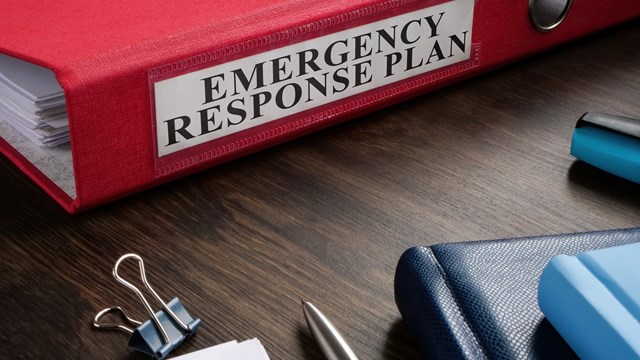
A panel of emergency preparedness experts told board members and managers how to prepare their buildings to weather coastal storms, like 2012’s Hurricane Sandy, safely.
In the recent installment of Argo University for Boards at Manhattan's Hotel Beacon on September 27th , the panel—Ira Tannenbaum, an assistant commissioner and the director of public/private initiatives for the New York City Office of Emergency Management (OEM); Lindsay Goldman, the director of Healthy Aging at the New York Academy of Medicine; and Pat Antonacci, an insurance broker and the executive vice president of the Stockbridge Group—outlined steps that buildings and administrators should take to make sure not only that the building infrastructure is battened down for the storm, but that residents are aware of what’s going on and can be safely evacuated if the weather gets much worse.
Establish a Registry
In most scenarios, your building staff is called upon to deal with any situation prior to the arrival of the first responders: police, fire, health department, medical professionals or emergency management officials.
Each building, says Goldman, should have a registry of those in the building that have some kind of special needs, such as the elderly, infirm or those who have a physical or cognitive impairment.
So what can the community do to support people who may be a little more vulnerable? Or what is the best way to communicate in an emergency? Older people in Hurricane Sandy were more likely to rely on landlines but those failed, Goldman says, adding that one of the main priorities during a storm event or any emergency situation is communication.
It would be very difficult for the city itself to handle such a registry, Goldman says, adding that it’s a great idea locally. “So just generally, it’s very difficult for the city to administer something like that, it’s not something we recommend. But on a building, hyperlocal, neighborhood level, we absolutely recommend that you have a registry and you know who lives in the building and you ask them the right questions. We’ve actually helped buildings create registry questionnaires so people can actually know who is there and what languages they speak.”
The registry needs to provide detailed contact information, including ethnicity, age ranges, and demographic information on the building residents, she says. Nearly 50 percent of the city’s older population were born outside of the United States and 30 percent do not speak English, she says.
Oh Sandy!
Hurricane Sandy, which affected 24 states, including New York City and its boroughs, and the entire Eastern Seaboard from Florida to Maine, turned out to be one of the deadliest and second costliest hurricane in U.S. history behind Katrina. At least 233 people died in the path of the storm in eight countries. Of that death toll, 53 were in New York.
A storm surge hit New York City on October 29, 2012, flooding streets, tunnels and subway lines and cutting power throughout the city. Areas like Staten Island, Coney Island, Breezy Point in Queens, the Rockaways, Nassau and Suffolk counties, and Lower Manhattan suffered catastrophic damage.
Goldman, who did a year-long study on older adults dealing with disasters with a special focus on Hurricane Sandy, says that many elderly residents were stuck in their apartments for hours or even days, and had no access to services. Building officials and emergency personnel had to go door-to-door and floor-to-floor to determine who was most in danger and in need of help.
When the electricity goes out, things like refrigerators, generators, medical equipment and elevators will be shut down. Residents, especially the elderly, need to know where to go and what to do during a storm event, she says.
Insurance and Hurricane Zones
Every building and every homeowner should have adequate insurance, Antonacci explains.
“It’s important you always ask the question, 'What is my coverage and what am I not covered for?” he says, stressing the importance of having the proper insurance. He notes that no homeowner’s policy will cover things like floods or earthquakes, and any supplemental insurance needs to be purchased separately.
The city’s OEM will use every effort available to notify residents during a storm, including sending out emergency or weather alerts, according to Tannenbaum. He says it’s important that all residents know what hurricane zone they are in—in case an evacuation becomes necessary. New York City is divided into individual zones from 1 to 6—you can sign up for Notify NYC, which gives automated alerts, according to Tannenbaum. “You have to know whether your building is located in an evacuation zone. If the mayor issues an evacuation order for Zones 1 and 2, that’s not the time to figure it out,” he says.
During Hurricane Sandy, Tannenbaum says the city used hundreds of thousands of city employees to go building-to-building and door-to-door to find out what people needed and stress the need to evacuate if they were in a hurricane zone. “Supers and building staff, make sure you have the necessary supplies during and after a storm,” he says.
What did officials learn from Hurricane Sandy? “Sandy was a massive storm event from which the city hasn’t fully recovered,” Tannenbaum notes. However, it did provide some valuable lessons so that city officials, residents, buildings and boards can prepare for the next big coastal storm and ride it out safely and securely.
Debra A. Estock is managing editor of The Cooperator.






Leave a Comment